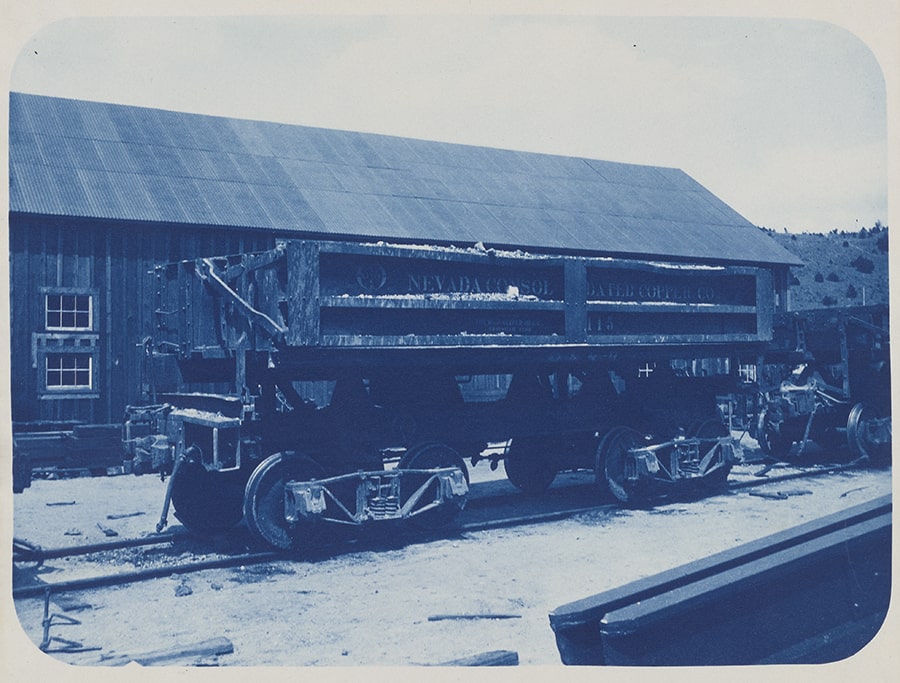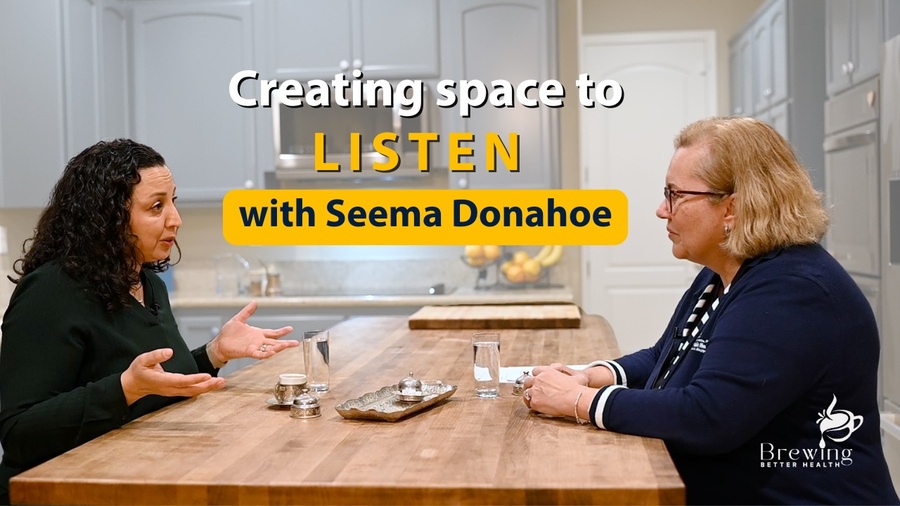In the latest episode of Checked Out!, the official podcast of the University Libraries’, listeners get to hear from Katherine Dirk, digitization lab manager, for the Digital Services department.
In the interview, Dirk discusses what it’s been like working remotely during quarantine, how she and others from the Libraries worked together to provide users with virtual access to the Libraries’ collection of high-use anatomical models. She describes working with born digital files from the late 1970s found on floppy disks within the Joe Crowley Collection, the Nevada Consolidated Copper Company Records collection, as well as work completed for the Washoe County Recorder’s Office and more.
University Libraries Checked Out! Episode 7
Sean and Sasha talk to Katherine Dirk from Digital Services about the cool projects they've worked on for the Libraries and for the community.
The Libraries’ Digital Archive houses approximately 50,000 objects that are available to users online via the Libraries website.
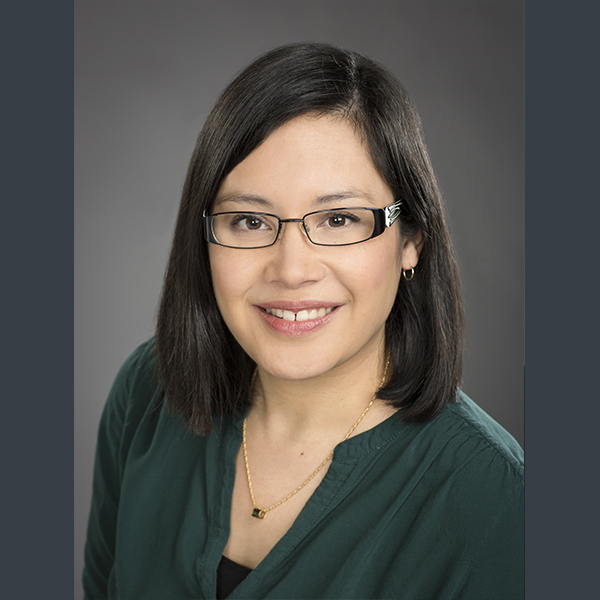 Katherine Dirk, Digitization Lab Manager
Katherine Dirk, Digitization Lab ManagerThe lean, two-person Digital Services department is composed of Nathan Gerth, head of digital services, and Katherine Dirk. They are responsible for digitizing historical or unique materials or working with born digital materials. Gerth works primarily with born digital files, whereas Dirk is responsible for digitizing physical books, manuscripts and photos that come through the department.
Digital Services collaborates with most Libraries departments. For example, they partner with Special Collections and University Archives, the Jon Bilbao Basque Library, DeLaMare Science and Engineering Library as well as with others from across the campus community.
Digitizing the Anatomical Model Collection
The Libraries has a collection of approximately 41 different anatomical models that users can check out for classes, studying, etc. In late 2019, over Winter Break, Libraries’ staff worked to disassemble and clean all of the models after final exams. As staff sanitized the models, someone had an idea.
“As models were being cleaned over Winter Break 2019, someone had the idea to take high quality photos of the models, Dirk said. “Because there was an understanding of the work performed by Digital Services, they reached out to the department with the idea to take high resolution images of the models and load them online to the Libraries’ website providing users with virtual access to this highly used collection.”
As Dirk digitized the set of 41 models, she captured and edited more than 200 images. It took her approximately one week to complete the project. They anatomy models were then made available online via the Libraries website. The anatomy model digitization project was completed in mid-February, allowing students to use the materials for classes or to help prep for finals without having to physically come into the Mathewson-IGT Knowledge Center.
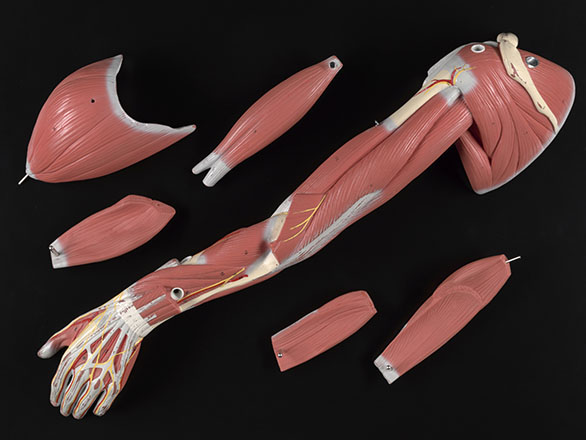
“We launched the digital Anatomical Model Collection right before the mandated quarantine by the Governor,” Dirk said. “Getting the high-res images online and completing the project when we did was wonderful timing. We were able to see immediate impact in usage of the website as we moved deeper into the Spring semester.”
Dirk added, “When the website launched in late-February it received about one-thousand page views. When we looked at web traffic data for this site from last year we learned the page had only received about one-hundred page views. This information provided good insight that our users liked seeing the images of the bones, joints, muscles and other models we have in this collection online!”
To view this collection visit the Libraries website and search Anatomical Models Online.
The Process of Preservation
Digital Services uses a high-resolution camera that is mounted to a column. The camera can move up and down along the column. The camera points down at a table. With the anatomy models for example, models were placed on the table below the camera. In order to ensure the proper digitization, Dirk had to figure out how to prop-up each model to make sure all angles, different parts are visible in the image she was capturing.
For the Anatomical Models Dirk said she had to get creative when staging the models for digitization.
“For certain models, I had to figure out how to prop the model up; I used tape to get different angles,” Dirk said. “Some models come apart – I could split the muscle from the bone and capture multiple images of the model together and split apart for users to view online for studying, etc.”
Washoe County Recorder Historical Records Collection
Digital Services partnered with the Washoe County Recorder’s Office in 2019 to execute a pilot project in which the Libraries digitized 20 volumes of historically significant records from the Recorder’s Office library of nearly 4,000 volumes. The Recorder’s Office had a desire to create digital copies of records from their library for preservation purposes. The Recorder’s Office was also interested in providing potential users with access to the records online.
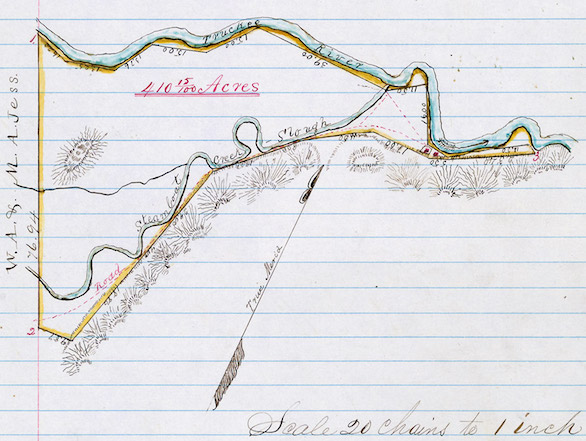
Primary source materials digitized by the Libraries for the Recorder’s Office included a variety of official County records, land transactions, homestead claims, land surveys, liens, cemetery plots, court judgments, property claims. Records range from 1855 to 1964, covering the time from when Nevada was part of the Utah Territory, then became the Nevada Territory, and later became a state.
The University Libraries is a physical and virtual hub for preservation both on and off campus.
“Digital Services is using its technology, equipment, and platforms to preserve records that lead to diverse and lasting impacts that exist well beyond the Libraries,” Gerth said. “The partnership with the Recorder’s Office is a perfect example of how the Libraries fulfill a critical need for a key player in our community.”
To view this collection visit the Digital Archive, and search Washoe County Recorder Historical Records.
Nevada Consolidated Copper Company Records
Digital Services worked with this collection housed in Special Collections and University Archives in late 2019. The collection is composed of administrative documents from the Nevada Consolidated Copper Company, later taken over by the Kennecott Copper Corporation. It includes 11 photo albums with cyanotype and black & white photographs from the Chief Engineer’s Office depicting mining operations, equipment, and progress from within the mining pits. There are seven boxes of company letters, telegrams, operating notes, manuals, surveys and procedures, as well as annual reports, and correspondence between employees and other businesses from 1906 -1938.
The collection brings to life the history of mining in Nevada. It is important because it fills in early 20th century information about mining in northeast Nevada as well as the company’s town of McGill, its smelter, and the Northern Nevada Railway that serviced the mine.
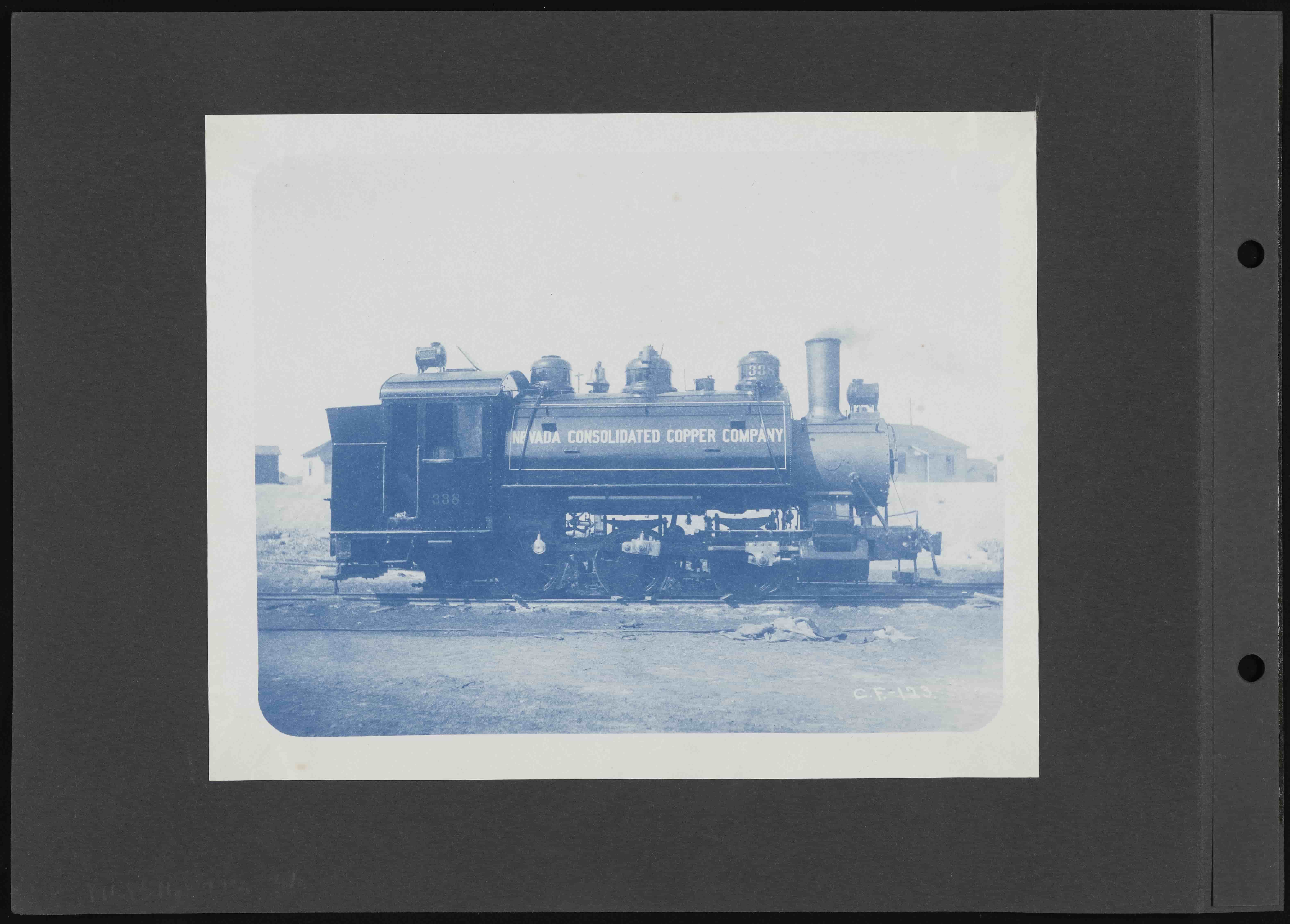
The Libraries Digital Services Department plays a key role in academic advancement on campus and within the northern Nevada community. To learn more about Digital Services visit the department website or feel free to reach out to Head of Digital Services, Nathan Gerth.
About the University Libraries
The University Libraries embrace intellectual inquiry and innovation, nurture the production of new knowledge, and foster excellence in learning, teaching and research. During each academic year, the Libraries welcomes more than 1.2 million visitors across its network of three branch libraries: the Mathewson-IGT Knowledge Center, the DeLaMare Science and Engineering Library and the Savitt Medical Library. Visitors checked-out more than 80,000 items and completed more than 2 million database searches.
Nathan Gerth: Hello and welcome to another episode of Checked Out! The official podcast to the University Libraries and Teaching and Learning Technologies. My name is Nathan Gerth and I'm the head of Digital Services. This week Sasha and Sean spoke with Katherine Dirk, our digitization lab manager about some of the fascinating work we do. Including how we are able to give students virtual access to those popular anatomical models while everyone was still in quarantine. Please stay tuned and enjoy the show!
Sasha Soleta: Thank you Nathan for that introduction, as always, I'm Sasha!
Sean Busey: and I'm Sean! Welcome to Checked out, the University of Nevada, Reno Library's podcast. Today, we talked to Katherine Dirk
Sasha: Mmm-hmm
Sean:... from Digital Services about just a bunch of the cool stuff that Digital Services gets to do! I'm really jealous that more of us--specifically me!--don't get to take part in some of these things.
Sasha: I honestly feel like its a Venn diagram of all your jobs that you've had and what Katherine does is the intersection of all the former library jobs you've had so...
Sean: yeah... I should be jealous
Sasha: yeah you should be jealous!
*both Sean and Sasha laugh*
Sean: yeah, it’s the kind of job that's like perfect suited for like a specific person and knowing Katherine like I do, I'm pretty sure she's knocking it out of the park. Scanning and preservation and digitization... as the name Digital Services might suggest!
Sasha: Whaaaaaaaaa-?
Sean: I know its a weird concept! Try to keep up with all of us... loyal listeners!
*laughs*
Sean: All 12 of you
Sasha: I mean shout out to those loyal listeners from day one, Yo!
Sean: We're gonna try to figure out who you are and then do like a raffle and then...
Sasha: You'll win absolutely nothing, yeah *laughs*
Sean: (underneath Sasha) I'm shaking my head the whole time...
Yeah, yeah... you win a shout-out and a crisp high-five when I pass you in the hallway
Sasha: I mean would we get in trouble if we set up a Patreon without letting anyone else know...?! To just benefit us?
*both laugh*
Sean: Yeah! Totally!
Sasha: Okay! Cool!
Sean: Never mind how overworked the rest of the team is.
Sasha: No, no! They don't need it!
Sean: We'll buy them beer! Yeah
*both laugh*
Sasha:I think that it’s a fair trade!
Sean: Yeah, totally! Especially if it’s a good beer!
Sasha: *sarcastically* Mmm-hmmm!
*Both laugh again*
Sean: So... today we are talking to Katherine Dirk! She is the digitization lab manager up in Digital Services. Thank you for being with us!
Katherine Dirk: Of course!
Sean: So to start with... tell us about what Digital Services does and your specific role in the department.
Katherine: Sure! So Digital Services is a small shop, it’s just two of us: myself and Nathan Gerth. We are responsible for digitizing historical or unique materials or working with born digital materials. So Nathan typically works with the born digital files and I'm typically in charge of doing the digitization of the actual physical books, some manuscripts, photographs that come through.
Sean: And you have students that help you with this? How many students do you typically have?
Katherine: So I have 3 students that are trained to use the software... one of them just graduated though, so...
Sean: You have two students!
Katherine: *dejectedly* Now I have two students
*all laugh*
Sasha: So does this work in conjunction with Special Collections? I don't really know much about your two departments that much, so... I ask the simple questions...
*Sasha and Sean laugh*
Katherine: Sure! So we actually are part of Technical Services because there is a lot of 'technical' work that goes into it, but we work very closely with Special Collections. We also work with Basque we work with DeLaMare. We've got a lot of historical maps that we've put up. We also have campus partners we've worked with as well.
Sean: Super!
Sasha: So one thing I do know about because my department was kind of part of it is: you helped to digitize the anatomy models so how did that project like kind of come about? Tell us a little more about it
Katherine: Sure! So as you guys have probably heard the anatomy models we're being cleaned over Winter Break and I'm not sure who thought of the idea, if it was Access Services or Digital Services, but somebody proposed that it would be a great time to actually take some high quality shots of the models. So Rainey Marvin was the person that sort of headed all that up. She got everything cleaned and scrubbed, her students worked on those a lot. And then once those were ready, we took them up to the digitization lab and I spent about a week digitizing models. So the models - I think there's about 41 of them - and we ended up taking over 200 shots.
Sean: Wow!
Sasha: So do you put them all together in to one epic shot? or do you just pick the best shot?
Katherine: So one of the things that I should probably describe is how we actually captured those. So we use a high resolution camera that's mounted on a column that can move up or down. The camera points down at a table and I would place the model on the table and I would have to figure out how to prop it so you could see the different parts of it because some models you have to look at all sides of it. So I would end up putting tape or putting something underneath to prop it up so I could get the different angles of it, I would have to turn it around. Some of the models actually come apart. So things like muscles or bones you would actually split them out. So we're trying to take shots where it was put together and split up so you could see all the different pieces of it.
Sean: That's really cool. So the digital models then on the site are like composites of all these pictures and you put all the digital pictures together? Am I understanding that right?
Katherine: So most of the images are single shot. We had some skeletons where I would pull them apart and take a shot like that and then I would leave them together and take a shot like that, but most the images you actually see I... you know had to place the bones out. In some cases I didn't know where they were supposed to go so I would have to get help on that. *all laugh* But most of the images you actuall see on the website are just single shots.
Sean: Okay... Cool! And then I guess another follow up: I don't know if you would have the information, but do you know how many uses the digital models have gotten versus the physical ones or is that something that Access Services would know?
Katherine: So Access Services had that information and when I stopped Rainey last, last year they only had a couple hundred views on the webpage and this year they had over 1,000! So my hope is that people were using that for classes or studying, especially in the COVID time.
Sean: Yeah Definitely!
Sasha: So another recent project I've heard tell about is the Digital Services - your guys' department partnering with Washoe County Records Office? So how did all that happen and what are you guys actually digitizing for those sorts of things?
Katherine: Sure so back in 2018 Nathan Gerth attended a statewide digitization workshop and it was where several institutions and offices from around the state came together. I had the pleasure of attending last year but when he attended he actually met the former County recorder for Washoe County and they got to talking about things because the county has a lot of records but they don't have the equipment or infrastructure to digitize things. So I think it presented itself as a great opportunity for partnership with the county. So we had them come take a visit and then bring a sort of test batch, or pilot batch of materials we could digitize for them.
Sasha: So like what kind of materials are we talking about here? What does the Recorders Office do, or like have?
*Sasha and Sean laugh*
Katherine: So they have official county records so we asked them to bring a variety of records, like what kind of materials represents what your office has, and what the public is interested in. So they brought, for example, cemetery records which we were able to contact one of the organizations for the Hillside Cemetery. They are interested in preserving that cemetery, in figuring out the plots and that sort of thing. They also had things that had marks and brands, so people used to have to register their marks and brands with the County. We actually have a library employee who found her family brand in one of the volumes.
Sean: So you said Hillside Cemetery? That's the one that's kind of up by the University?
Katherine: Correct. It's a couple blocks away from UNR.
Sean: Yeah in my undergraduate days, I used to be one of the many students who walked on through there to get to class so...
Sasha: Same with me, I used to live on Ralston street and would have to walk by it every day!
Sean: Nice, bringing the community together there! So this is obviously with the County... is there any sign that this will lead to any more work with the County or the State or City departments or anything like that?
Katherine: It has! So we've actually digitized some materials for the city and right before the pandemic hit we did a batch test for the County Assessor's Office. They have a lot of records for taxes and properties that they wanted to digitize. A lot of their materials are very large! Like if you imagine a 20x20, that's not a typical size, you can't just plop it on a scanner. So it works for us because our digitization equipment allows us to capture wide images.
Sean: How big is the table that your camera is on?
Katherine: It can capture 30x40 inches.
Sean: Wow and this is Hi-Def so you can get some really detailed images of really big items.
Katherine: Right, so one of the things I think is really unique about this is because this is historical materials, we are capturing things kind of like how you said 'Hi-Def' and we're able to really capture the image as-is. So whenever we do capture we actually do a calibration session and that makes sure that we're getting the right amount of exposure, the right shutter speed. We actually make sure we are getting the right Black and White so that when we do take an image, it appears on the screen how it would appear in person.
Sean: That's great! So when we were kind of prepping this interview you mentioned you had done some work with the 1000 miles Partner Project?
Katherine: Right!
Sean: I googled that and I just got really weird results so what is that? and what is the work you've been doing with it? *laughs*
Katherine: So The 1000 miles is a set of diaries that was written by husband and wife and they decided to take a prospecting trip across California and Nevada and they captured and wrote down all their encounters, where they were, what they were doing, if they found anything. So they wrote these diaries and published the volumes. So we have 3 of the volumes and my team digitized the three volumes and we have them in our digital collection. Then when the pandemic hit it kind of presented an opportunity for Digital Collections and Special Collections who has the original physical diaries. It presented an opportunity for us to think about how can we reach out to people who are maybe not in school right now. The partner project is with the Washoe County Library and its gonna be focused mostly on school-aged children and the diaries sort of represent interesting things about animals, minerals, that sort of thing. So we've partnered with people from the community, for example we are partnering with the Keck Museums so they can talk about minerals. Some deals who can talk about animals or the landscape, that sort of thing.
Sean: That's cool! It sounds nothing like what the crazy Google results I got.
*All laugh*
Sasha: Yeah I just googled it right now and got like 1,000 miles by Vanessa Carlton.
Sean: Yeah
Sasha: That's all good!
Sean: Yeah it sounds like a really good project and I hope that name gets out there so Google gets a little less strange.
Katherine: Yes I hope so too! *laughs*
Sasha: So is that already working for students in Washoe? Is it already an active thing that people are participating in or is it something that is coming out like for fall or...?
Katherine: It’s something coming out soon so it’s actually gonna be part of the County's Summer Reading Program. So, we already have the diaries digitized, they are already in our digital collections so if people want to go look at them right now, they can. But what the partner project has done has created videos so we can show snip-its of the diaries, somebody's gonna read them out loud and then we'll have our partners do the lesson piece of the video. Its short videos that are for kids and hopefully it kind of introduces them to some of the primary sources that we have in Special Collections and our Digital Collections.
Sean: As someone that got a Master's in History, I feel really jealous of all the cool things like this that kids have now in school. It’s just so neat, I wish it would have been around when I was in my whole younger days!
Katherine: In your youth?
Sean: In my wee-days *laughs*
Sasha: Were any of your kids the guinea pigs for any of the materials, Katherine? Did you like run some stuff by them or...?
*everyone laughs*
Katherine: We actually did so I have two kids and one of them is in that target age, so I would say "what's more interesting to you? what image do you like the most?"
Sean: I don't have kids but that sounds like great parenting!
*everyone laughs*
Sean: So is there any other cool stuff that you've been working on that you wanted to mention? Any upcoming projects that you have?
Katherine: Sure, so right now the Library is working on a mining exhibit. The mining exhibit is actually gonna go up in the physical library but one of the collections we've scanned in preparation for the mining exhibit is the Nevada Consolidated Copper Company scrapbooks. These were scrapbooks that were taken out in the mining flats and they’re on Cyanotypes. Do you know what Cyanotypes are?
Sasha: I don't... No...
Sean: No...
Sasha: I'm looking at Sean like... I know he knows! Just show off!
Sean: I'm sitting here like I know the word but I can't remember it so it’s just easier to say no.
Katherine: Did you ever make sun prints when you were kids?
Sean & Sasha: Yeah
Katherine: It’s that same sort of blue material where if you put something on it and then underneath will turn white. Cyanotype is the same kind of paper that they used to process things on so it’s pretty rare now. So they have all these scrapbooks that were really great images and obviously centered on mining. So we have already scanned it, we finished it before we all had to work from home and so right now I'm working with metadata team so we can get everything online. One of the other things we are working on... obviously we can't go to the building and do any digitization so Digital Services kind of shifted toward born digital collections and I recently helped process the Joe Crowley collection, the born digital aspect of it, as you guys know, he was a president here for the University for I think 23 years. So he had a lot of born digital files!
Sean: That's really cool!
Katherine: You know, when people think of born digital as being something more modern and new, but he actually had old files that went back to the 1970's. So one of the things that we have to do is make them accessible now. A lot of the files were Wordperfect and you usually can't open a Wordperfect file anymore.
*Sean Laughs*
Katherine: So part of that processing is putting them into a file format that people can read now.
Sean: That's really cool! I bet it was - It sounds like it was pretty frustrating at some points. Where you just find something and you're like "now I have to find a computer capable of... this"
Katherine: Right!
*both chuckle*
Sasha: I just imagine a box of floppy disks and being like... "okay!... That's cool"
Katherine: That's essentially what it was... Special Collections they have actual papers but then they had all these floppy disks that they brought to digital services and we have special equipment that allows us to read that and pull the files up so that we can then process them into more a more modern format.
Sean: Yeah, that's really cool! Very jealous.... well thank you for taking the time to talk to us!
Katherine: You're welcome!
Sean: And stay healthy for as long as quarantine lasts.
Sasha: and I mean... after...?! *incredulously*
*all laugh*
Katherine: Yes! After too! That would be good!
Sean: No no no...! After that, you're on your own!
Sasha: Sean's well wishes only last til' the end of quarantine!
Sean: yeah, yeah
Katherine: I'll keep that in mind!
Sean: After that I'm taking the Rain Wilson approach from The Office. During quarantine you have my wishes! After that you're on your own! Survival of the Fittest!
Katherine: That means I'm gonna carry Lysol and when I see you I'll just spray you down!
*all laugh*
Katherine: That's fair
Sean: Okay, I deserve it, I deserve it
Sasha: So if you want to check out the awesome things that Katherine just talked about, all you have to do is go to our library website which is library.unr.edu and in that top little search-edy bar type the project you want to look at and it should pull up the page for that. And you can enjoy the magic of Katherine's digital projects!!
Sean: To your hearts content! Recreate the museum experience right there in your own living room, or office, or garage, or car, or....
Sasha: I mean probably not your car unless I guess you're getting away from your kids and hiding in your car and its totally parked and stationary.
Sean: Yeah!
Sasha: I don't approve of driving and digital projects viewing.
Sean: Yeah... yeahyeahyeah... that's not why Digital Services does this! They do this so you can be safe!! *laughs*
Sasha: And there's nothing more safe than creating a museum in your own home by looking at these awesome digital projects.
Sean: Yeah! Yeah, I mean, how likely do you think a museum heist would be if you did this in your own home?
Sasha: I mean...
Sean: Some nimble cat burglar coming in through your skylight
Sasha: I don't think it’s very likely only because Nicholas Cage is busy filming Tiger King right now so he doesn't have time to plan a heist, National Treasure style.
Sean: I mean even...
Sasha: You guys are safe!
Sean: ...even if he did he would give it away by screaming at Elijah Wood or something
*both laugh*
Sean: So yeah... I enjoyed that, those projects are really fascinating to hear about. That was a good, informative conversation we had with Katherine.
Sasha: Yes and I know in the future... *SPOILER ALERT* if you will... we will be talking more about that 1,000 miles project in future episodes.
Sean: yeah or 'A' future episode, I think it currently in the planning stage so...
Sasha: That's like a real big spoiler that may never happen, so don't bug us about it.
Sean: yeah! don't @ us
Sasha: Yeah, I mean you can't... we don't have a twitter or Instagram so no @'ing will be had.
Sean: What happens if you @ us you basically @ the University Library's social media which it sort of gets back to Jill. *laughs*
Sasha: Yeah i think....
Sean: Yeah, yeah, so basically if you want to yell at us you're going to make Jill feel bad and don't do that to Jill!
Sasha: Yeah, we like Jill!
Sean: Yeah don't do that!
Sasha: How about let’s not make anybody feel bad!
Sean: Yeah! Definitely!
Sasha: Let’s all hippie love circle right now! We don't need to feel bad!
Sean: Yeah the world needs to feel good right now!
Sasha: The world sucks enough, lets just calm down!
Sean: Yeah, yeah, the world needs to feel good right now so that's why we're talking to you about awesome things like Digital Services... maaaaaan. Be coooool!
Sasha: All right, our credits for the episode: as always your host today were Sasha Soleta and Sean Busey. Our special guest today was Katherine Dirk, digitization Lab Manager.
Sean: As always thank you to the library's podcast team, Maggie Ressel, Michelle Rebaleati, Luka Starmer, Jill Stockton, and Reed Barrus
Sasha: A special thanks to Nathan Gerth, head of Digital Services, who provided our introduction today. As always episode music is provided by Better Days by Luwen Wilkstrom, courtesy of Universal Production Music.
Sean: Thank you for listening! Until next time, this is 'Checked Out' Checking out!
